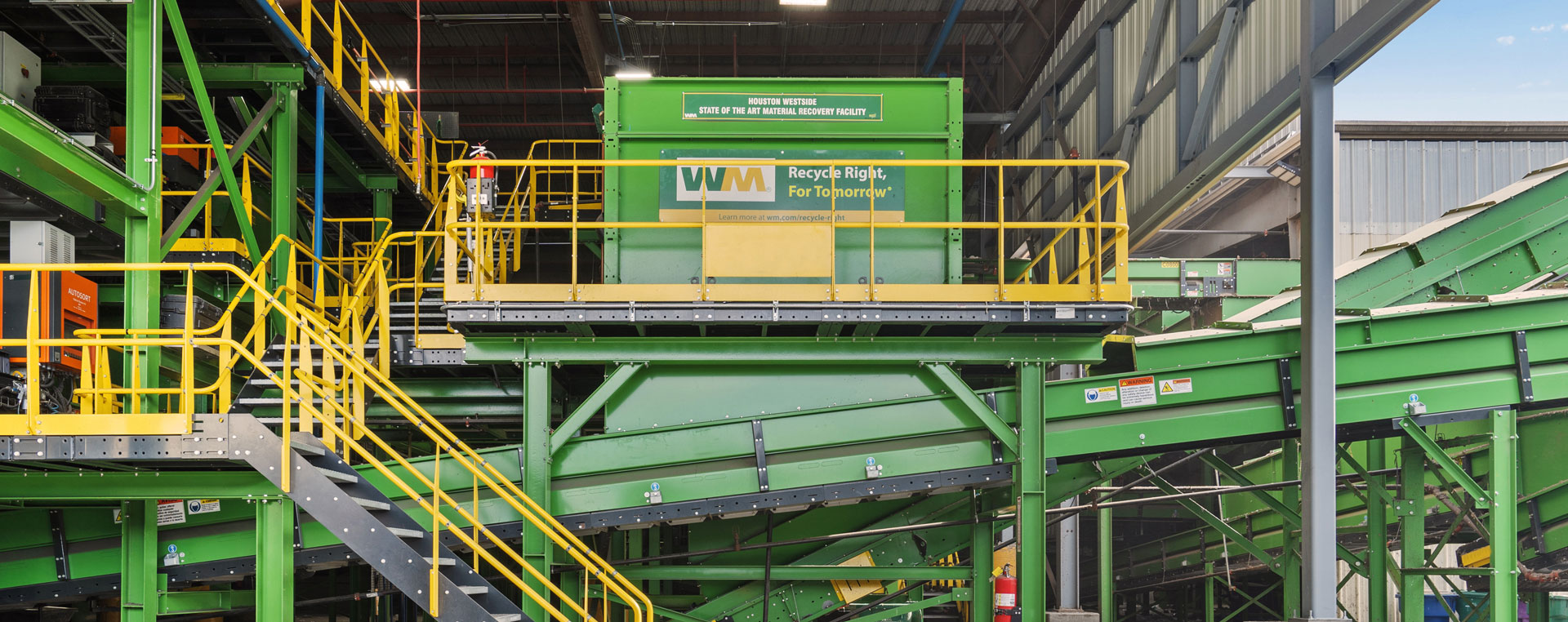
SASB Index
WM is committed to consistent and meaningful public disclosure and discussion of our sustainability progress through the use of voluntary sustainability reporting standards and frameworks. This document is prepared in alignment with the Sustainability Accounting Standards Board (SASB) Waste Management Standard Version 2023-12. Information included in the SASB Index is for the reporting period of January 1, 2023 through December 31, 2023.
2024 SASB Report
About WM
WM is North America’s leading provider of comprehensive environmental solutions. Previously known as Waste Management and based in Houston, Texas, WM is driven by commitments to put people first and achieve success with integrity. The company, through its subsidiaries, provides collection, recycling, and disposal services to millions of residential, commercial, industrial, and municipal customers throughout the U.S. and Canada. With innovative infrastructure and capabilities in recycling, organics, and renewable energy, WM provides environmental solutions to and collaborates with its customers in helping them pursue their sustainability goals. WM has the largest disposal network and collection fleet in North America, is the largest recycler of post-consumer materials, and is the leader in beneficial use of landfill gas, with a growing network of renewable natural gas plants and the most landfill gas-toelectricity plants in North America. WM’s fleet includes over 12,000 natural gas trucks – the largest heavy-duty natural gas truck fleet in the industry in North America. To learn more about WM and the company’s sustainability progress and solutions, visit Sustainability.WM.com.
Legal Notice
Many of the assumptions, standards, methodologies, metrics and measurements used in preparing this report continue to evolve and are based on management assumptions believed to be reasonable at the time of preparation, but they should not be considered guarantees. There are inherent uncertainties in providing such information, due to the complexity and novelty of many methodologies established for collecting, measuring, and analyzing sustainability-related data.
Greenhouse Gas Emissions
| SASB Code | Disclosure Title | 2023 Response |
|---|---|---|
| SASB Code: IF-WM-110a.1 | Disclosure Title:
| 2023 Response: |
| SASB Code: IF-WM-110a.2 | Disclosure Title:
| 2023 Response: |
| SASB Code: IF-WM-110a.3 | Disclosure Title: Discussion of long-term and short-term strategy or plan to manage Scope 1 and lifecycle emissions, emissions reduction targets and an analysis of performance against those targets | 2023 Response: |
Fleet Fuel Management
| SASB Code | Disclosure Title | 2023 Response |
|---|---|---|
| SASB Code: IF-WM-110b.1 | Disclosure Title:
| 2023 Response: |
| SASB Code: IF-WM-110b.2 | Disclosure Title: Percentage of alternative energy vehicles in fleet | 2023 Response: |
Air Quality
| SASB Code | Disclosure Title | 2023 Response |
|---|---|---|
| SASB Code: IF-WM-120a.1 | Disclosure Title: Air emissions of the following pollutants:
| 2023 Response:
|
| SASB Code: IF-WM-120a.2 | Disclosure Title: Number of facilities in or near areas of dense population | 2023 Response: |
| SASB Code: IF-WM-120a.3 | Disclosure Title: Number of incidents of non-compliance associated with air emissions | 2023 Response: |
Management of Leachate & Hazardous Waste
| SASB Code | Disclosure Title | 2023 Response |
|---|---|---|
| SASB Code: IF-WM-150a.1 | Disclosure Title:
| 2023 Response: |
| SASB Code: IF-WM-150a.2 | Disclosure Title: Number of corrective actions implemented for landfill releases | 2023 Response: Our modern landfill liners continue to perform as designed, not allowing releases through the liner that would require corrective action to clean up groundwater under neighboring properties. |
| SASB Code: IF-WM-150a.3 | Disclosure Title: Number of incidents of non-compliance associated with environmental impacts | 2023 Response: |
Labor Practices
| SASB Code | Disclosure Title | 2023 Response |
|---|---|---|
| SASB Code: IF-WM-310a.1 | Disclosure Title: Percentage of active workforce covered under collective bargaining agreements | 2023 Response: |
| SASB Code: IF-WM-310a.2 | Disclosure Title:
| 2023 Response: |
Workforce Health & Safety
| SASB Code | Disclosure Title | 2023 Response |
|---|---|---|
| SASB Code: IF-WM-320a.1 | Disclosure Title:
| 2023 Response: |
| SASB Code: IF-WM-320a.2 | Disclosure Title: Safety Measurement System BASIC percentiles for:
| 2023 Response: |
| SASB Code: IF-WM-320a.3 | Disclosure Title: Number of vehicle accidents and incidents | 2023 Response: |
Recycling & Resource Recovery
| SASB Code | Disclosure Title | 2023 Response |
|---|---|---|
| SASB Code: IF-WM-420a.1 | Disclosure Title:
| 2023 Response: WM does not own or operate waste incineration facilities. |
| SASB Code: IF-WM-420a.2 | Disclosure Title:
| 2023 Response: |
| SASB Code: IF-WM-420a.3 | Disclosure Title: Amount of material:
| 2023 Response: |
| SASB Code: IF-WM-420a.4 | Disclosure Title:
| 2023 Response: |
Activity Metric
| SASB Code | Disclosure Title | 2023 Response |
|---|---|---|
| SASB Code: IF-WM-000.A | Disclosure Title Number of customers by category:
| 2023 Response: |
| SASB Code: IF-WM-000.B | Disclosure Title: Vehicle fleet size | 2023 Response: |
| SASB Code: IF-WM-000.C | Disclosure Title: Number of:
| 2023 Response: |